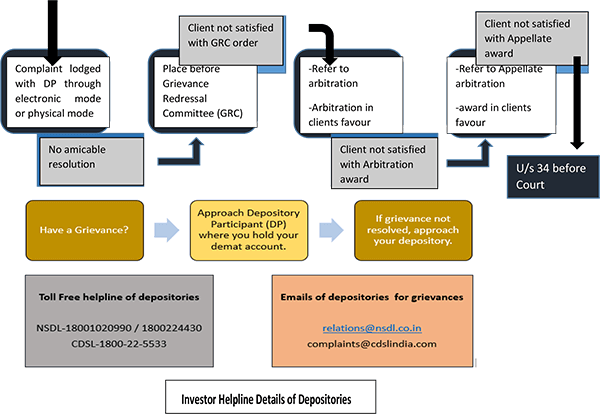Cryptocurrency – Don’t fall into the Trap
Value investing to earn long-term returns is old school now because the scheme of riches has been unlocked, where anyone and everyone can double their money within whooping a couple of months.
A treasure trove of wealth lies behind a door and Cryptocurrency is the key to unlock that door. It is the easiest way to make money without any hard work, discipline or skill (unlike value investing).
BTC-USD price trend
Source: TradingView
In the midst of the Corona Pandemic, while many lives may feel stagnant, the crypto market and its investors were experiencing thrilling roller coaster rides.
Everyone started believing that the crypto age has been started or a crypto revolution has emerged. Also, people started believing that the traditional (fiat) currency will soon be outdated, which was further propagated by influencers like billionaire entrepreneur Elon Musk.
Musk’s Opinion about Cryptos
Elon Musk has been an influential figure in the cryptocurrency space, particularly with his tweets that have impacted the market.
He has shown support for cryptocurrencies like Bitcoin and Dogecoin in the past. Musk’s tweets mentioning Bitcoin have caused significant fluctuations in its price.
For example, in February 2021, Tesla announced that it had purchased $1.5 billion worth of Bitcoin and planned to accept Bitcoin as a form of payment for Tesla vehicles.
However, it’s important to note that Musk’s stance on cryptocurrencies can be unpredictable and subject to change.
He has also expressed concerns about the environmental impact of Bitcoin mining, which led to Tesla halting Bitcoin payments for its vehicles in May 2021.
Musk has also mentioned Dogecoin multiple times on social media, which has contributed to its popularity and price volatility.
Musk, dint say something novel, but defined cryptocurrency by criticizing the centralized federal structure. Cryptocurrency is a medium of exchange (or transaction) that is encrypted, digitalized and ‘decentralized’ and based on blockchain technology.
The irony is that it is not even considered a currency and it is a hot topic of debate as to what it should be considered, a currency, commodity, financial asset (like equity) or others, because it has some of the features of all these items but lacks a few others.
So, are cryptocurrencies illegal?
As per most national Laws, cryptos are not illegal, but also not a legal tender of money. However, it can be used as a digital substitute of fiat currency (US Dollar). It’s important to note that regulations and legal frameworks surrounding cryptocurrencies can vary and evolve over time.
In India, the Reserve Bank of India (RBI) issued a circular in April 2018 that prohibited banks from dealing with or providing services to individuals or businesses involved in cryptocurrencies.
However, in March 2020, the Supreme Court of India overturned this ban, allowing individuals and entities to engage in cryptocurrency transactions.
The Indian government has introduced the Cryptocurrency and Regulation of Official Digital Currency Bill, 2021. The bill proposes a ban on private digital currencies and favours the introduction of a digital currency backed by the Reserve Bank of India (RBI).
The bill includes a provision for a 3-6 month exit period before the trading, mining, and issuing of cryptocurrencies would be banned.
In April 2022, India introduced a 30% income tax on any gains made from cryptocurrencies. In July 2022, rules regarding 1% TDS on cryptocurrency came into effect.
The central government, through a notification dated 7 March 2023, has included digital assets, cryptocurrencies, and related financial services under the scope of the Prevention of Money Laundering Act (PMLA).
This means that the trading, safekeeping, and other financial activities involving digital assets and cryptocurrencies are now subject to the regulations outlined in the PMLA.
In the United States, cryptocurrencies are not illegal. The U.S. Securities and Exchange Commission (SEC) has stated that cryptocurrencies can be considered securities in certain cases, and they have issued guidelines and regulations to govern their usage.
Additionally, the U.S. Internal Revenue Service (IRS) has provided guidance on the taxation of cryptocurrencies.
Still, confused about Crypto’s legality?
Cryptocurrencies are not considered illegal, but it’s important to note that they are not recognized as valid legal tender. Still confused? Let’s break it down:
1. Cryptocurrencies are not illegal: In many countries, including India and the United States, owning, buying, selling, and trading cryptocurrencies is generally legal. There are regulations and guidelines in place to govern their usage, but they are not outright illegal.
2. Not valid legal tender: Legal tender refers to the recognized form of payment accepted by a government to settle debts, typically in the form of fiat currencies like the Indian Rupee or the US Dollar. Cryptocurrencies, on the other hand, are not considered legal tender. This means that they are not officially recognized as a medium of exchange for goods and services by the government.
See fiat currency like Indian Rupee is just a piece of paper with Gandhiji’s face on the front. It has zero value until the value is defined by the Indian govt or RBI.
The value of an Indian Rupee note is defined by its legal status as the official currency of India and its acceptance as a medium of exchange for goods and services within the country.
The Reserve Bank of India (RBI) is the central authority responsible for issuing and regulating the Indian Rupee.
A 10, 50 or 100 rupee note has its value because RBI said, it has such value. On an Indian Rupee note, the following is typically printed to signify its value and legal tender status:
“I promise to pay the bearer the sum of (10, 50, 100, or whatever is printed) Rupees.”
This statement is typically accompanied by the signature of the Governor of the Reserve Bank of India. It signifies that the note is legal tender, which means it can be used as a form of payment for goods and services within India.
Therefore, the creditors are legally obligated to accept these notes towards payment of financial obligation (or debt) as a legal tender.
On the other hand, since cryptocurrencies are not legal tenders, Tesla is not obligated to accept Bitcoins (or Dogecoin) towards payment of its cars, but it is accepting it voluntarily.
You can consider the case similar to the shares of a company, which are legal, but are not legal tender. I mean to say that you cannot force an Apple store to accept shares of Apple Inc as payment for an iPhone 14 Pro Max because stocks typically are also not legal tender of money.
Investing in Cryptocurrencies
Coming back to the investing part, cryptocurrency is a highly volatile security and the investor riding the Bitcoin roller coaster must take precautionary measures in advance.
To make an investment, it is crucial to understand the fundamentals of any security. Similar to a fiat currency, cryptos also do not have any value of their own. There is no underlying asset and there is also no centralized agency (like government) to back it.
It is not derived by business activities or economies of nations or the world. Unlike equity stocks, it cannot be valued by analyzing the assets or liabilities of a company, the performance of the industry or market competition.
Also, the promoter or founder of the first Cryptocurrency, Bitcoin named Satoshi Nakamoto is unknown or anonymous to the world (intentionally or unintentionally).
The only factor works in the crypto market is demand and supply or market sentiments. Overall, its value is mostly speculative. The supply of all cryptocurrencies is limited (unlike fiat currency).
When max supply gets exhausted, no further coins can be produced (or mined), which means it gets benefited from the scarcity. The supply of Bitcoin, the first and most popular currency, is limited to 21 million tokens.
Now, the prices fluctuate as demand fluctuates just like gold, which also has limited availability and this might be the reason that cryptocurrencies are termed as digital gold.
The Fundamentals of Cryptocurrency
Fundamentally analyzing cryptocurrencies involves evaluating key aspects that contribute to their value and long-term prospects. Here are some fundamental factors to consider:
1. Technology and Innovation: Assess the underlying technology, such as blockchain, and the level of innovation in the cryptocurrency’s protocol. Look for unique features, scalability, security, and potential for real-world applications.
2. Use Case and Utility: Evaluate the practical use case and utility of the cryptocurrency. Consider whether it solves a real-world problem, has a strong user base, and provides value or utility within its ecosystem.
3. Team and Community: Research the development team behind the cryptocurrency, their experience, and their track record. Also, examine the size and engagement of the community supporting the project, as it can indicate a strong network effect and adoption potential.
4. Market Demand and Adoption: Analyze the level of market demand for cryptocurrency. Look at factors like trading volume, liquidity, exchange listings, and partnerships with established companies or institutions.
5. Regulatory Environment: Consider the regulatory landscape surrounding cryptocurrencies in different jurisdictions. Understand how regulations can impact the cryptocurrency’s legality, adoption, and potential for growth.
6. Financials and Token Economics: Evaluate the financial aspects, including the token’s supply and distribution, inflation rate, staking or mining mechanisms, and any potential economic incentives.
7. Competitive Landscape: Assess the competitive landscape and compare the cryptocurrency to similar projects or alternative solutions in the market. Look at factors like market share, differentiation, and potential barriers to entry.
The Synthetic Fundamentals
On the basis of the above analysis, it can be said that Crypto investing lacks inherited fundamentals, and totally depends on market demand and supply factors.
Therefore, smart investors and analysts have identified (or created) synthetic fundamentals by analyzing the market trends and Crypto-nature.
For example, Bitcoin, a decade & a half old crypto coin can be valued by studying the historical price trends, traditionally known as technical analysis.
For a general investor or a lame duck, the Bitcoin movement can be considered a roller coaster ride, but it’s not. Movements in Bitcoin look absolutely random, but, like various financial security and economic variables (like GDP); it tends to move in seasonal trends.
For example, seasonality in equity prices is due to changes in corporate calendar events (like earnings season) or in commodity prices due to changes in the weather.

Now what’s a crypto-trader required to profit? Just look back and identify the behaviour, the seasonality!! See, there are tax seasons (primarily US tax season), there are crypto winters, it gets impacted by global holidays like Christmas, and there is Santa Claus Rally.
Combine all these factors, while remaining stick with the traditional investing rules (like the one which says to buy low and sell high).
Just keep it in mind and keep saying it like a broken record: don’t try to time the market, don’t let your emotions sway your investment choices, steer clear of rumours, and, above all, don’t get too greedy.
It has been identified that the bitcoin market set foot in a bullish market in around every four years.
And as the bull year ends, the market witnesses 3 consecutive slow years. Bitcoin (or cryptos) that introduced in 2009, and two bull periods have arrived since then, including 2017 and the latest in 2021. In 2017, the Bitcoin price climbed close to $20,000 started from $1,000.
With similar performance in 2021, it reached above $68,000, by end of 2021. It is currently trending near $27500, & it is expected to reach $100,000 by the end of 2024. This is how crypto market is volatile and unpredictable.
The Current Scenario
Bitcoin has experienced a remarkable 66% rise in value since the beginning of the year. However, it has recently faced a significant decline after surpassing the $31,000 mark during mid April, 2023.
The recent collapse of Silicon Valley Bank and other mid-tier U.S. lenders has sparked discussions about the role of Bitcoin as a potential alternative in times of financial turmoil.
As traditional banks face challenges and concerns about a possible recession loom, some argue that Bitcoin’s decentralized nature, trustless system, and limited supply make it an appealing option for investors seeking stability and security.
This, coupled with speculation that the Fed will ease further monetary tightening (Fed is continuously rising interest rates since early 2022, with recent including rise of 25 bps in May, 2023) are indicating that bitcoin can possibly reach the levels of USD 100,000 said experts and analysts.
Conclusion
So, in a cryptomarket, remain optimistic but with caution or ‘cautiously optimistic’. It is more crucial to understand the market first. Study the market fundamentals and create your own synthetic fundamentals.
Avoid greediness and become any market animal, but a pig, because a famous financial quotes says that: “bulls make money, bears make money, but pigs always get slaughtered”.






